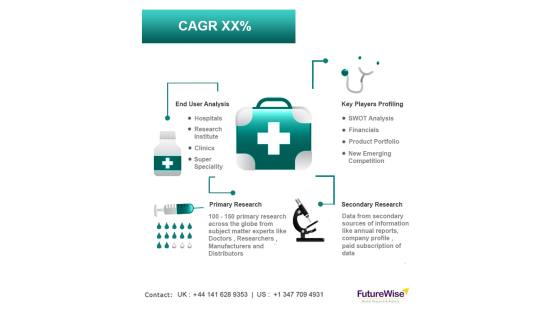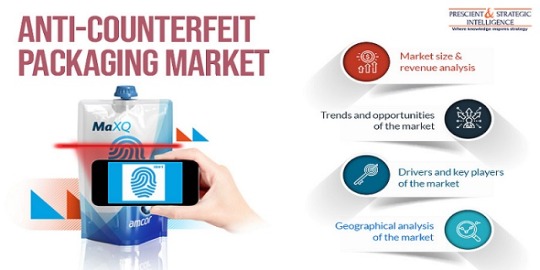#counterfeiting pharmaceuticals
Explore tagged Tumblr posts
Text
"Blood Money" by Peter Schweizer
This book needs to go viral. The survival of the United States depends on it. The ugly truth is revealed masterfully through Schweizer’s gold standard of investigative journalism. He has put together an amazing expose of corruption that involves not only how China is trying to undermine our country, culture, and democracy, but the public figures who are not only allowing, but facilitating it,…

View On WordPress
#Biden#CCP#China#Chinese sabotage#Communism#corruption#counterfeiting pharmaceuticals#COVID coverups#drug and human trafficking#drug wars#Gavin Newsom#illegal weapons#open border#Peter Schweizer#Schiff#TikTok
0 notes
Text
Pharmaceutical Traceability Market is in Trends by Digitalization of Supply Chains
The pharmaceutical traceability market deals in tracking and tracing products in the pharmaceutical supply chain. Traceability solutions involve serialization, aggregation, and scanning of packaged pharmaceutical products to uniquely identify and track individual items or collections through facilities and different stakeholders. This helps meet regulations, prevent counterfeiting, automate recalls, optimize inventory, and enable digital supply chain visibility. The Global Pharmaceutical Traceability Market is estimated to be valued at US$ 4.96 Bn in 2024 and is expected to exhibit a CAGR of 9.5% over the forecast period 2024 To 2031. Key players operating in the Pharmaceutical Traceability are M&R Printing Equipment, MHM Siebdruckmaschinen GmbH, Lawson Screen & Digital Products, Sakurai USA, SPS TechnoScreen GmbH, ATMA Champ Ent. Corp., Systematic Automation, DECO TECHnology Group, TOSH (Italy), Thieme GmbH & Co. KG. Due to strict regulations imposed by governments and regional authorities, the demand for track and trace solutions is growing. Serialization requirements will drive significant investments in pharmaceutical traceability systems to ensure product authenticity and safety. With increasing online pharmacies and cold chain requirements, real-time traceability across the distribution network is gaining importance. Pharmaceutical companies are expanding globally to cater to foreign markets. Pharmaceutical Traceability Market Growth increases complexity and risk of supply chain disruptions. Traceability systems allow end-to-end visibility and monitoring of product movement across geographies. Data-driven recalls and exception management further optimize costs. The Global Pharmaceutical Traceability Market is estimated to be valued at US$ 4.96 Bn in 2024 and is expected to exhibit a CAGR of 9.5% over the forecast period 2024 To 2031. Key Trends: One of the key trends in the pharmaceutical traceability market is the digitalization of supply chain processes. Traditional paper-based systems are moving to connected digital platforms for traceability. Real-time product status and location updates are enabling data-driven decision making. Blockchain, IoT, and AI are introducing new opportunities to securely share supply chain data, flag risks proactively, and automate operations. This brings higher transparency while supporting compliance.
Porter's Analysis Threat of new entrants: The pharmaceutical traceability market has moderate barriers to entry due to high capital requirements for setting up manufacturing units and need for regulatory compliances. Bargaining power of buyers: Buyers have moderate bargaining power due to presence of many established players offering traceability solutions at competitive prices. Bargaining power of suppliers: Suppliers have low to moderate bargaining power as there are numerous component providers and raw material suppliers in the market. Threat of new substitutes: Threat of new substitutes is low as traceability solutions integrated with blockchain and IoT offer unique value proposition compared to traditional product tracking methods. Competitive rivalry: The market is highly competitive due to presence of numerous global and regional players offering a wide range of traceability solutions. Geographical Regions North America region dominated the pharmaceutical traceability market in 2024 and accounted for over 30% of the global market share. Major factors contributing to North America's large share include technological advancements, stricter regulations around product traceability and presence of key players and early adopters. The Asia Pacific region is projected to witness the fastest growth during the forecast period from 2024 to 2031. Increasing domestic manufacturing in countries like China and India coupled with growing awareness about supply chain integrity is expected to drive high demand for traceability solutions in Asia Pacific. Penetration of technologies like blockchain and IoT would further aid growth.
Get more insights on Pharmaceutical Traceability Market
For Enhanced Understanding, Dive into the Report in the Language that Connects with You.
French
German
Italian
Russian
Japanese
Chinese
Korean
Portuguese
About Author:
Ravina Pandya, Content Writer, has a strong foothold in the market research industry. She specializes in writing well-researched articles from different industries, including food and beverages, information and technology, healthcare, chemical and materials, etc. (https://www.linkedin.com/in/ravina-pandya-1a3984191)

#Coherent Market Insights#Pharmaceutical Traceability Market#Drug Traceability#Supply Chain Traceability#Pharma Supply Chain#Traceability Systems#Track And Trace#Pharmaceutical Compliance#Serialization#Anti-Counterfeiting#Drug Safety#Pharmaceutical Packaging
0 notes
Text
https://www.onfeetnation.com/profiles/blogs/pharmaceuticals-and-food-anti-counterfeiting-technologies-market

Pharmaceuticals and Food Anti-Counterfeiting Technologies Market Size, Overview, Share and Forecast 2031
#Pharmaceuticals and Food Anti-Counterfeiting Technologies Market#Pharmaceuticals and Food Anti-Counterfeiting Technologies Market Scope#Pharmaceuticals and Food Anti-Counterfeiting Technologies Market Size
0 notes
Text
Govt releases guidelines to curb unethical pharma sector practices
Stay informed on the Dept. of Pharmaceuticals' new Uniform Code for Pharmaceutical Marketing Practices 2024 & guidelines on gifts & benefits to curb unethical conduct.

#Pharmaceutical Marketing Practices 2024#guidelines on gifts & benefits#prevent unethical practices#Counterfeit Drugs and Supply Chain Integrity#guidelines to curb unethical pharma sector practices
0 notes
Link
Using BIRS, Artificial Intelligence, Machine Learning, Fraud Detection, and Proprietary Algorithms, we can track real-time whether goods and materials are genuinely destructed and recycled.
#Paper Waste Reduction#dubai municipality approved#Food Waste Recycling#Automotive parts recycling in Dubai#Counterfeit items recycling Dubai#Electronics recycling in Dubai#Packaged food/drinks recycling#Pharmaceutical waste recycling in UAE#Brand Protection in UAE#R2 Certified in UAE
0 notes
Text
Strict Safety Regulations are Trending in the Anti-Counterfeit Packaging Market
The anti-counterfeit packaging market is observing a considerable growth at present, and this trend will continue in the years to come as well, because of the growth of the counterfeit industry all over the world.
The surge in strict product safety regulations with regards to counterfeiting is the newest trend in the industry. Subsequently, concentration of fake products is unceasingly increasing, government of numerous countries are employing strict regulations for controlling counterfeiting activities. These guidelines impact the industry positively and target to wipe out fake products.

The track and trace category, with regards to technology had the largest share in the industry. It is because of the high-volume acceptance of packaging techs, allowing manufacturers to track and trace their shipments and evade any technological impairments.
Pharma and healthcare will grow the fastest in the years to come. This has a lot to do with the fast acceptance of this kind of packaging in medical industry, due to the snowballing concerns regarding health and also an increase in the production of pharmaceuticals.
North American anti-counterfeit packaging market was the largest in the past, and it will continue to be like this in the years to come as well. This has a lot to do with the strong base of pharma, food and beverage, and consumer good companies, adopting anticounterfeit packaging. Seeing the future scenario, the U.S. will lead the regional market.
In the years to come, the industry will grow the fastest in the APAC, mainly because of the growing consciousness pertaining to the unscrupulous counterfeit activities among manufacturers. The growth can also be attributed to the increasing population along with the increasing disposable income, which is leading to the increasing demand for packaged food in the region, eventually boosting the market.
#Anti-Counterfeit Packaging#Brand Protection#Market Trends#Security Innovations#Authentication Solutions#Market Players#Product Traceability#Tamper-Evident Packaging#Supply Chain Security#Pharmaceutical Authentication#Food and Beverage Security#Market Insights#Packaging Technology
0 notes
Text
Anti-counterfeit Pharmaceutical Packaging Market: Key Strategies for Drug Authentication

The pharmaceutical industry plays a critical role in public health by providing life-saving medications and treatments. However, this industry faces an ongoing challenge: counterfeit drugs. Counterfeit pharmaceuticals pose a significant threat to patients' health, as they may contain ineffective or harmful ingredients. To combat this issue, the pharmaceutical sector has embraced anti-counterfeit pharmaceutical packaging solutions. In this article, we will delve into the "Anti-counterfeit Pharmaceutical Packaging Market," exploring its growth drivers, current trends, key players, and future prospects.
The Need for Anti-counterfeit Pharmaceutical Packaging
Counterfeit pharmaceuticals are a global concern, with potentially devastating consequences. Patients relying on counterfeit drugs may experience worsened health conditions, adverse side effects, or even fatalities. The World Health Organization (WHO) estimates that around 10% of drugs available worldwide are counterfeit, with the percentage rising in some regions. To address this alarming issue, the pharmaceutical industry has adopted anti-counterfeit measures, and packaging is at the forefront of these efforts.
Market Growth Drivers
Stringent Regulatory Requirements: Regulatory bodies such as the U.S. Food and Drug Administration (FDA) and the European Medicines Agency (EMA) have implemented strict guidelines regarding pharmaceutical packaging and labeling to ensure product integrity and patient safety. Compliance with these regulations drives the adoption of anti-counterfeit packaging solutions market.
Increasing Counterfeit Drug Incidents: As counterfeit drug incidents continue to rise, pharmaceutical companies are compelled to invest in advanced packaging technologies to protect their brand reputation and, more importantly, patient well-being.
Advancements in Technology: Innovations in printing, tracking, and authentication technologies have made it easier for pharmaceutical companies to implement anti-counterfeit measures in their packaging. QR codes, holograms, tamper-evident seals, and unique serial numbers are just a few examples of such advancements.
Growing Pharmaceutical Industry: The pharmaceutical industry is expanding, driven by an aging population, increased healthcare spending, and the demand for new treatments. This growth, in turn, fuels the demand for effective anti-counterfeit packaging solutions.
Current Trends in the Market
Track-and-Trace Technologies: Pharmaceutical companies are increasingly adopting track-and-trace technologies to monitor the movement of their products throughout the supply chain. This ensures that medications reach their intended destination without tampering.
Smart Packaging: Smart packaging solutions, such as RFID (Radio-Frequency Identification) tags and NFC (Near-Field Communication) labels, enable real-time monitoring of products and enhance supply chain security.
Authentication Features: Innovative authentication features, like digital watermarks and 3D holograms, are being integrated into pharmaceutical packaging to make it more difficult for counterfeiters to replicate.
Blockchain in Pharmaceuticals: Blockchain technology is gaining traction in the pharmaceutical industry to create transparent and immutable records of a drug's journey from manufacturer to consumer. This helps in verifying the authenticity of pharmaceutical products.
Key Players in the Market
Several companies specialize in providing anti-counterfeit pharmaceutical packaging solutions. Some of the key players in this market include:
Avery Dennison Corporation: Known for its expertise in labeling and packaging materials, Avery Dennison offers a range of anti-counterfeit solutions, including tamper-evident labels and RFID tags.
CCL Industries Inc.: CCL Industries is a global leader in specialty packaging solutions, offering technologies such as brand protection labels and tamper-evident closures.
SICPA: SICPA specializes in secure traceability and authentication solutions, providing pharmaceutical companies with tools to combat counterfeit drugs effectively.
Essentra: Essentra focuses on providing packaging, authentication, and security solutions tailored to the pharmaceutical industry's needs.
Future Prospects
The anti-counterfeit pharmaceutical packaging market is poised for significant growth in the coming years. As the pharmaceutical industry expands and regulations become even more stringent, the demand for innovative packaging solutions will continue to rise. Furthermore, advancements in technology, including the integration of blockchain and artificial intelligence, will further enhance the effectiveness of anti-counterfeit measures.
In conclusion, the "Anti-counterfeit Pharmaceutical Packaging Market Growth" is essential for safeguarding public health and maintaining the integrity of the pharmaceutical industry. As counterfeit drug incidents persist, pharmaceutical companies will increasingly invest in advanced packaging solutions to protect their products and, most importantly, their patients. With evolving technology and a commitment to regulatory compliance, this market is set to play a pivotal role in ensuring the safety and efficacy of pharmaceutical products in the years to come.
#Anti-counterfeit Pharmaceutical Packaging Market Share#Anti-counterfeit Pharmaceutical Packaging Market Growth#Anti-counterfeit Pharmaceutical Packaging Market Demand
0 notes
Text

TrackMatriX Serialization module provide ready-to-use interface mapping templates that enable data exchange between packaging lines and advanced tracking and tracing systems.
#Anti counterfeiting technology pharmaceuticals#saas solutions for brand protection#brand protection software#brand protection solutions#digital counterfeiting software
0 notes
Text

Pharma Secure is one in every of the leading providers of regulatory serialization solutions to pharmaceutical companies operating round the world. Pharma Secure is currently a Candidate for being a registered Connection Provider Gateway Provider for the EMVO hub. Falsified medicines directive serialisation can facilitate your by extending support and services to form your organization compliant with EU FMD regulations. Need more information? Get up-to-date with us today and request a quote for our FMD compliance solutions.
#us dscsa serialization service provider serialization solution provider india pharma domestic serialization#serialization services for pharma manufacturing pharmaceutical serialization compliance#brand protection & anti counterfeiting solution serialisation solution provider india#track and trace pharmaceutical industry serialization solution provider india
0 notes
Text
The Role of Blockchain in Supply Chain Management: Enhancing Transparency and Efficiency

Blockchain technology, best known for powering cryptocurrencies like Bitcoin and Ethereum, is revolutionizing various industries with its ability to provide transparency, security, and efficiency. One of the most promising applications of blockchain is in supply chain management, where it offers solutions to longstanding challenges such as fraud, inefficiencies, and lack of visibility. This article explores how blockchain is transforming supply chains, its benefits, key use cases, and notable projects, including a mention of Sexy Meme Coin.
Understanding Blockchain Technology
Blockchain is a decentralized ledger technology that records transactions across a network of computers. Each transaction is added to a block, which is then linked to the previous block, forming a chain. This structure ensures that the data is secure, immutable, and transparent, as all participants in the network can view and verify the recorded transactions.
Key Benefits of Blockchain in Supply Chain Management
Transparency and Traceability: Blockchain provides a single, immutable record of all transactions, allowing all participants in the supply chain to have real-time visibility into the status and history of products. This transparency enhances trust and accountability among stakeholders.
Enhanced Security: The decentralized and cryptographic nature of blockchain makes it highly secure. Each transaction is encrypted and linked to the previous one, making it nearly impossible to alter or tamper with the data. This reduces the risk of fraud and counterfeiting in the supply chain.
Efficiency and Cost Savings: Blockchain can automate and streamline various supply chain processes through smart contracts, which are self-executing contracts with the terms of the agreement directly written into code. This automation reduces the need for intermediaries, minimizes paperwork, and speeds up transactions, leading to significant cost savings.
Improved Compliance: Blockchain's transparency and traceability make it easier to ensure compliance with regulatory requirements. Companies can provide verifiable records of their supply chain activities, demonstrating adherence to industry standards and regulations.
Key Use Cases of Blockchain in Supply Chain Management
Provenance Tracking: Blockchain can track the origin and journey of products from raw materials to finished goods. This is particularly valuable for industries like food and pharmaceuticals, where provenance tracking ensures the authenticity and safety of products. For example, consumers can scan a QR code on a product to access detailed information about its origin, journey, and handling.
Counterfeit Prevention: Blockchain's immutable records help prevent counterfeiting by providing a verifiable history of products. Luxury goods, electronics, and pharmaceuticals can be tracked on the blockchain to ensure they are genuine and have not been tampered with.
Supplier Verification: Companies can use blockchain to verify the credentials and performance of their suppliers. By maintaining a transparent and immutable record of supplier activities, businesses can ensure they are working with reputable and compliant partners.
Streamlined Payments and Contracts: Smart contracts on the blockchain can automate payments and contract executions, reducing delays and errors. For instance, payments can be automatically released when goods are delivered and verified, ensuring timely and accurate transactions.
Sustainability and Ethical Sourcing: Blockchain can help companies ensure their supply chains are sustainable and ethically sourced. By providing transparency into the sourcing and production processes, businesses can verify that their products meet environmental and social standards.
Notable Blockchain Supply Chain Projects
IBM Food Trust: IBM Food Trust uses blockchain to enhance transparency and traceability in the food supply chain. The platform allows participants to share and access information about the origin, processing, and distribution of food products, improving food safety and reducing waste.
VeChain: VeChain is a blockchain platform that focuses on supply chain logistics. It provides tools for tracking products and verifying their authenticity, helping businesses combat counterfeiting and improve operational efficiency.
TradeLens: TradeLens, developed by IBM and Maersk, is a blockchain-based platform for global trade. It digitizes the supply chain process, enabling real-time tracking of shipments and reducing the complexity of cross-border transactions.
Everledger: Everledger uses blockchain to track the provenance of high-value assets such as diamonds, wine, and art. By creating a digital record of an asset's history, Everledger helps prevent fraud and ensures the authenticity of products.
Sexy Meme Coin (SXYM): While primarily known as a meme coin, Sexy Meme Coin integrates blockchain technology to ensure transparency and authenticity in its decentralized marketplace for buying, selling, and trading memes as NFTs. Learn more about Sexy Meme Coin at Sexy Meme Coin.
Challenges of Implementing Blockchain in Supply Chains
Integration with Existing Systems: Integrating blockchain with legacy supply chain systems can be complex and costly. Companies need to ensure that blockchain solutions are compatible with their existing infrastructure.
Scalability: Blockchain networks can face scalability issues, especially when handling large volumes of transactions. Developing scalable blockchain solutions that can support global supply chains is crucial for widespread adoption.
Regulatory and Legal Considerations: Blockchain's decentralized nature poses challenges for regulatory compliance. Companies must navigate complex legal landscapes to ensure their blockchain implementations adhere to local and international regulations.
Data Privacy: While blockchain provides transparency, it also raises concerns about data privacy. Companies need to balance the benefits of transparency with the need to protect sensitive information.
The Future of Blockchain in Supply Chain Management
The future of blockchain in supply chain management looks promising, with continuous advancements in technology and increasing adoption across various industries. As blockchain solutions become more scalable and interoperable, their impact on supply chains will grow, enhancing transparency, efficiency, and security.
Collaboration between technology providers, industry stakeholders, and regulators will be crucial for overcoming challenges and realizing the full potential of blockchain in supply chain management. By leveraging blockchain, companies can build more resilient and trustworthy supply chains, ultimately delivering better products and services to consumers.
Conclusion
Blockchain technology is transforming supply chain management by providing unprecedented levels of transparency, security, and efficiency. From provenance tracking and counterfeit prevention to streamlined payments and ethical sourcing, blockchain offers innovative solutions to long-standing supply chain challenges. Notable projects like IBM Food Trust, VeChain, TradeLens, and Everledger are leading the way in this digital revolution, showcasing the diverse applications of blockchain in supply chains.
For those interested in exploring the playful and innovative side of blockchain, Sexy Meme Coin offers a unique and entertaining platform. Visit Sexy Meme Coin to learn more and join the community.
#crypto#blockchain#defi#digitalcurrency#ethereum#digitalassets#sexy meme coin#binance#cryptocurrencies#blockchaintechnology#bitcoin#etf
274 notes
·
View notes
Text
Pharmaceuticals and Food Anti-Counterfeiting Technologies Market Size, Overview, Share and Forecast 2031
#Pharmaceuticals and Food Anti-Counterfeiting Technologies Market#Pharmaceuticals and Food Anti-Counterfeiting Technologies Market Scope#Pharmaceuticals and Food Anti-Counterfeiting Technologies Market Size
0 notes
Text
Story at a Glance:
•In 1906, the first FDA (Food and Drug Administration) was created in response to massive public protests against adulterated food and drugs (e.g., rotting food partially preserved with food additives or counterfeit consumer products). To stop it, food industry lobbyists attempted every tactic imaginable, eventually taking over the Department of Agriculture and in time forcing the dedicated public servant leading it (Harvey Wiley) to quit. Because of this, many toxic food additives Wiley fought against gained “generally recognized as safe” (GRAS) status and remain in use today.
•The handicapping of the FDA came to a head in 1962, when thalidomide was just barely prevented from devastating America’s children, prompting Congress to give the FDA much broader powers to police the safety and efficacy of drugs.
•Unfortunately, this law backfired, as the FDA created an impossible to reach standard of efficacy that it selectively enforced to protect the pharmaceutical industry and simultaneously began utilizing increasingly brazen (and illegal) police tactics against anyone promoting effective natural therapies.
•Because of this, many life-changing medical therapies (discussed throughout this article) were blacklisted by the FDA and faded into obscurity. This, along with the FDA’s tendency to push unsafe and ineffective therapies (e.g., vaccines or antidepressants) onto the market regardless of how much data argued against doing so, led to the FDA becoming the most protested agency in the federal government.
•Nonetheless, every attempt to fix the FDA failed. In this article, I will review the structural issues that have perpetually caused the FDA to succumb to incompetence and corruption. I propose potential solutions that can utilize the unprecedented window created by the Make America Healthy Again movement to end the FDA’s war against America’s health.
For most of my life, I have observed the FDA belligerently suppress natural treatments and any unorthodox therapy which threatens the medical monopoly while simultaneously railroading through a variety of unsafe and ineffective drugs regardless of how much public protest the agency meets. Consider for example, this 2004 Senate testimony by the FDA scientist who got Vioxx banned that accurately described exactly what would come to pass with the COVID vaccines two decades later:
24 notes
·
View notes
Text
Psy vs. Psy
I genuinely think that if they were going to bring back any psych villian, Lindsay Leikin would pose the biggest threat. She knows Shawn isn’t psychic, she has adequate motivation to target him personally, and has the skills to prove he’s a fraud and do it slyly as she is also highly skilled in deductive reasoning (she did manage to get them to the counterfeiter to begin with so she has legitimate talent). She could even orchestrate it from prison. Maybe her parole was denied again so, like, what else is she going to do? Plus, she’s kind of nuts. Faking being a psychic with the FBI is a whole other level of bold compared to a local precinct, then she met a counterfeiter and was like yes please, more crime, then killed him when he tried to run, slept with Shawn that same night, then tried to take him hostage when she got caught. Its just a shame she wasn’t a bit more charismatic or eccentric. They had her play it as a very normal girl swept into a life of crime because of a guy (probably because she was a “love interest” for Shawn) when the receipts show she was an absolute lunatic (look at her face after they found the guy she killed. This bitch is smiling).

Also, she just kinda gave up when she was caught. I wish she’d have been screaming “he’s a fraud!” as she was taken to the car or even had a heart to heart moment with Lou Diamond Phillips because she did betray him after all. Idk, i just wanted more. (But i think maybe the writers recognized this and thats how we get Declan later??)
Gus is basically siri at this point. Between the archeology, safes, online poker, the law, tennis players, space, comic books, of course pharmaceuticals, and now studies tender from all over the world- its a smaller list of what Gus doesn’t know. Gus clearly likes learning. I’m surprised he never thought of becoming a teacher or college professor, to try to pass that love of learning to the next generation. Though i guess we see he’s not that great with people surprisingly, considering he’s a successful salesman. (OH MY GOD WHAT IF THIS WHOLE TIME GUS ACTUALLY HAD LIVED UP TO HIS POTENTIAL AND BECAME AN INTERNATIONAL SPY. He knows all these things because of his job, psychs only been able to stay open because Gus can fund it from his spy job, joining psych was a good front but he was also lonely from never getting to be himself. I kid, i kid, but its a fun idea for me haha)
No fucking way shawn doesn’t know what a drill is. Henry definitely would have beat that kind of man stuff into him. The military time too. I just felt the need to point this out. its like the show itself is dissing my boy and i have to defend him lol
I love when Gus is proud and smarmy over shawns talent. Look at his face here. My boy about to prove you wrong.

And do you think Shawn is actually afraid of competition or do you think he learned at an early age from his father that he didn’t have value unless he was the best? Huh Henry, huh???(Weekend warriors “you don’t want to be a loser” comes to mind)
Henry trying some reverse psychology here. I can’t tell if its because Henry is actually concerned for Shawns safety like he said he wasn’t in the previous episode, or if he’s still taking it personally that Shawns using the gifts he “gave” him to be psychic. Probably both. We know he was really bothered by his motorcycle accident, so i wonder if he’s been kind of spiraling, and adding up all the crazy situations he’s been in. (Which, i don’t think Shawn tells him about. i think Gus calls him like a weekly report haha) I think the fact that shawns cases are becoming more dangerous he suddenly doesn’t like the idea of him being a detective, well a detective this way at least, because i think in his mind he’d be safer if he was an actual cop where he had a partner with a gun, and back up, and rules, and training. I mean we know he wouldn’t be, (look at what happens to Lassie and Juliet)
I just wanted to gif this because it’s one of my fave jokes in the episode!

Mildred to the rescue! Im not entirely sure how this worked but it did and thats what matters haha

*Appropriate reaction is appropriate*

#adding forgery to shawns repertoire#juliet must have heard all the romeo and juliet lines#i bet she hates Shakespeare#im pretty sure i had that exact easy bake oven lol#little shawn played the bassoon ✅#i think I’ve decided to let these be long#psych#psych tv#psych rewatch#psych usa#shawn spencer#burton guster#shawn and gus#james roday rodriguez#james roday#dulé hill#dule hill#corbin bernsen#timothy omundson#maggie lawson#carlton lassiter#juliet o'hara
45 notes
·
View notes
Text
FDA a criminal organization
In the late 1800s, food producers were selling adulterated products, and pharmaceutical companies peddled medicines with secret ingredients like opium and alcohol. Public outrage grew, especially after exposés like Upton Sinclair’s The Jungle,3 which helped spark the 1906 Pure Food and Drug Act.4 This law gave the Bureau of Chemistry the power to ensure accurate labeling and prevent harmful additives in food.
The director of the Bureau of Chemistry (and thus the first head of the FDA), Harvey Wiley5 conducted tests on food additives, proving they made healthy volunteers sick. While the public and many scientists supported his findings, the food industry fought back with powerful lobbyists and legal tactics.
Note: The additives Wiley scrutinized were boric acid and borax, salicylic acid (aspirin) and salicylates, benzoic acid and benzoates, sulfur dioxide and sulfites, formaldehyde, sulfate of copper (used to green produce), and saltpeter (nitrates).
Gradually, the food industry hijacked the presidency, and in 1912, Wiley resigned, realizing he could achieve more for America’s health as a private citizen than within the government.
Wiley’s book "The History of a Crime Against the Food Law"6 details much of the same abhorrent industry tactics we see happening now. For example, a series of investigative reports7 have recently shown that the processed food industry’s lobbyists are now working fervently behind the scenes to block RFK’s nomination and ability to Make America Healthy Again.
Those tactics also highlight a key point Wiley made — the only way to create change in this industry is to coax the public at large to demand it, as the moment you rely upon the members of the government to fix it, lobbyists will crush those efforts.
Generally Recognized as "Safe"
Many food additives are "generally recognized as safe" (GRAS), meaning they’re widely used without regulation. Wiley faced two major issues: food industry counterfeiting and harmful additives. The industry often faked products to cut costs, like selling grain alcohol as whiskey or using polluted waters to enlarge oysters.
Despite evidence of harm, the food industry claimed these additives were essential for production, even though competitors showed higher-quality products could be made without them. Wiley also warned that chronic exposure to additives could cause long-term health issues, such as organ damage and aging.
Sadly, his concerns were ignored as industry influence grew and he was unable to ban them. As a result, these "safe" additives have contributed to widespread chronic illness in society.
Note: Those additives included sodium benzoate,8 sulfur dioxide, alum (potassium aluminum sulfate), sulfur dioxide, saccharin, modified corn sugars, saccharin, and nitrogen bleached flour — many of which were linked to cancer.9 Sadly, since 2000, nearly 99% of new food chemicals added to the food supply chain have exploited the GRAS loophole.10
I believe the widespread use of aluminum in processed foods is particularly detrimental (due to it greatly impairing the physiologic zeta potential and causing micro-clotting throughout the body), and provides a key explanation for why you often see certain rapid improvements in individuals once they stop eating processed foods.
15 notes
·
View notes
Text

BAFTA Award-winning director of Top Gear Brian Klein last year proved that he is also an A-list author, with acclaimed political thriller The Counterfeit Candidate. Now, by popular demand, he has returned with a sequel, and another high-octane masterpiece: The Führer's Prophecy. Strap yourself in for a dramatic race against time to prevent the descendent of Adolf Hitler fulfilling the Nazi leader’s heinous plans for annihilation.
Buckle up, for new novel The Führer's Prophecy by Brian Klein is a page turner that is impossible to put down till the very end.
A thrilling and dangerous ‘What If?’ thriller, it follows on from the astounding success of Klein’s debut novel, 2021’s The Counterfeit Candidate – which has been hailed as an instant classic in the genre, becoming an Amazon bestseller with more than 60,000 sales to-date and thousands of five-star reviews.
Tantalising and gripping, The Counterfeit Candidate perfectly wove fact and fiction together into a high-concept, non-stop thrill ride which cleverly riffed on one of the world’s greatest conspiracy theories: that Nazi leader Adolf Hitler did not end his life in a Berlin bunker at the end of World War Two but instead fled to Argentina where he sired a family to, one day, realise his despicable plans.
The book received rave reviews from critics and fans alike, including among them some of the UK’s biggest celebrities including Jeremy Clarkson, Jamie Redknapp, Romesh Ranganathan and noted crime fiction author Peter James, who declared it “The best ‘what if?’ thriller I’ve read since Day of the Jackal”.
It’s no surprise, then, to learn that the novel is currently being adapted for TV but, in the meantime, its countless admirers have got their wish for a stunning sequel, which forms the second part of Klein’s ‘The Reich Trilogy’.
Set 10 years after the events of The Counterfeit Candidate, The Führer's Prophecy takes place during a time of global crises, when the Covid pandemic has swept across the planet and led all nations into lockdown.
The timing couldn’t be better for disgraced politician John George Franklin, who was revealed to be Hitler’s grandson in the previous novel.
Last time, he was narrowly prevented from reaching the White House by the combined forces of Lieutenant Troy Hembury of the LAPD and Chief Inspector Nicholas Vargas of the Buenos Aires Police Department.
When the dust cleared, he was presumed dead, but we quickly come to learn he’s still alive, and still intent on making the Nazi nightmare a horrifying reality.
We all know that one of Hitler’s most grotesque goals was seeking the extermination of the Jewish race.
What few know, however, is that he first aired this sick goal during a speech at the Reichstag in January 1939, later dubbed the ‘Führer's Prophecy’.
In the novel, which gets its title from this event, Franklin emerges from the shadows to fulfil that prophecy, with a plan as bold as it is deranged.
Being heir to pharmaceutical company Franklin Pharmaceutical Corporation, originally established by his infamous ancestor while hiding out in Argentina, Franklin he is able to create a super drug which causes female infertility.
Like its predecessor, The Counterfeit Candidate, The Führer's Prophecy by Brian Klein is a page turner that is impossible to put down till the very end.
His objective is to enter Israel and lace the water supply with this drug in a bid to kill off the Jewish people within the space of a few generations.
His fiendish masterplan is elaborate and needs the help of shady and murderous characters just as sick as he, such as feared terrorist Matias Paz, commonly known as ‘Black Scorpion’, and ruthless Taliban killers in Afghanistan.
Remarkably – and this is fact – the US military abandoned a number of Black Hawk helicopters in Afghanistan after their withdrawal and these were claimed by the Taliban.
In the story, Franklin gets his murderous hands on these to bust Black Scorpion out of a high-security prison in Argentina, in an audacious set-piece that’s alone worth the price of the ticket.
As he gets ever closer to releasing the super drug, the action moves to the Middle East, where the Taliban and Israeli secret police, Mossad, clash.
Ch Insp Vargas and Lt. Troy Hembury, joining together once again, are leading the counter-intelligence surveillance.
Despite their dogged investigations, they are always frustratingly one move behind Franklin as they seek to uncover the sinister scheme.
But as the body count rises, they are only ones who can locate the terrorists and bring Franklin down before it’s too late.
If you are new to the writing of Brian Klein then be ready for an action-packed, whirlwind-paced political thriller that holds nothing back.
A BAFTA Award-winning TV director, whose many credits include 28 series of Top Gear and seven series of Sky Max’s most-popular entertainment show League of Their Own Roadtrip, he has proven time and again that he has the nous to make electrifying entertainment.
The Führer's Prophecy benefits from all his skills behind the camera, making for pure blockbuster cinema on the printed page.
These were already on full display in his first novel, but the sequel is, arguably, even better than the first.
While The Counterfeit Candidate had foundational work to put in place, this time the plot and characters can jump straight onto the rollercoaster that is this arresting, world-spanning story of biological terror.
The storyline zips around the planet with more gusto than Michael Palin, transporting readers to the deserts of Iran, South America, the high seas, and, of course, Israel.
It also zips through time as Klein tells through judicious use of flashback how Hitler’s plans were tested out in Auschwitz, the notorious concentration camp where Nazi physician Josef Mengele perverted medical science with his experiments on helpless captives.
BAFTA Award-winning director Brian Klein has already made his mark in television. Now he’s doing the same in the literary world, with not one but two thriller masterpieces to his name. Here, he is pictured with Top Gear icon The Stig.
Far from taking the reader away from the dynamic story, they help cement it in the mind as a realistic, deep-rooted threat, as well as reminding us just what atrocities Hitler and his cronies were capable of.
Once more, Klein brings together the perfect cast for his novel and provides just the right amount of background and description to get readers invested.
Nicolas Vargas, for instance, has a score to settle with Black Scorpion, who almost killed him once before.
Troy Hembury, meanwhile, should by now be retired from service but is drawn into this case despite suffering from poor health.
Their frailties and inner demons, as well as their lasting friendship, adds an extra dimension to proceedings.
You have a blast of a read waiting for you, and one that every thriller fan should consider an essential purchase.
Daily inspiration. Discover more photos at Just for Books…?
8 notes
·
View notes
Text
Understanding Blockchain Technology: Beyond Bitcoin

Introduction
Blockchain technology, often synonymous with Bitcoin, is a revolutionary system that has far-reaching implications beyond its initial use in cryptocurrency. While Bitcoin introduced the world to the concept of a decentralized ledger, blockchain's potential extends well beyond digital currencies. This article explores the fundamentals of blockchain technology and delves into its various applications across different industries.
What is Blockchain Technology?
At its core, blockchain is a decentralized, distributed ledger that records transactions across many computers in such a way that the registered transactions cannot be altered retroactively. This ensures transparency and security. Each block in the chain contains a list of transactions, and once a block is completed, it is added to the chain in a linear, chronological order.
Key features of blockchain include:
Transparency: All participants in the network can see the transactions recorded on the blockchain.
Immutability: Once data is recorded on the blockchain, it cannot be altered or deleted.
Security: Transactions are encrypted, and the decentralized nature of blockchain makes it highly secure against hacks and fraud.
Blockchain Beyond Bitcoin
While Bitcoin brought blockchain into the spotlight, other cryptocurrencies like Ethereum and Ripple have expanded its use cases. Ethereum, for example, introduced the concept of smart contracts—self-executing contracts where the terms are directly written into code. These smart contracts enable decentralized applications (DApps) that operate without the need for a central authority.
Applications of Blockchain Technology
Finance:
Decentralized Finance (DeFi): DeFi platforms leverage blockchain to create financial products and services that are open, permissionless, and transparent. These include lending, borrowing, and trading without intermediaries.
Cross-border Payments: Blockchain simplifies and speeds up cross-border transactions while reducing costs and increasing security.
Fraud Reduction: The transparency and immutability of blockchain make it harder for fraud to occur, as all transactions are visible and verifiable.
Supply Chain Management:
Tracking and Transparency: Blockchain provides end-to-end visibility of the supply chain, ensuring that all parties can track the movement and origin of goods.
Reducing Fraud: By recording every transaction, blockchain helps prevent fraud and counterfeiting, ensuring the authenticity of products.
Healthcare:
Secure Data Sharing: Blockchain allows for secure sharing of patient data between healthcare providers while maintaining privacy and consent.
Drug Traceability: Blockchain helps track pharmaceuticals through the supply chain, reducing the risk of counterfeit drugs.
Voting Systems:
Secure Elections: Blockchain can provide a transparent and tamper-proof system for voting, ensuring that each vote is recorded and counted accurately.
Increasing Voter Participation: The security and convenience of blockchain-based voting could lead to higher voter turnout and greater confidence in electoral systems.
Real Estate:
Property Transactions: Blockchain can streamline property transactions by reducing paperwork, ensuring transparency, and preventing fraud.
Record-Keeping: Immutable records of property ownership and transactions enhance security and trust in the real estate market.
Challenges and Limitations
Despite its potential, blockchain technology faces several challenges:
Scalability: The ability of blockchain networks to handle a large number of transactions per second is limited, impacting its adoption in high-volume industries.
Energy Consumption: Blockchain, particularly proof-of-work systems like Bitcoin, requires significant energy, raising concerns about its environmental impact.
Regulatory Challenges: The decentralized and borderless nature of blockchain poses regulatory and legal challenges, as governments and institutions seek to manage and control its use.
The Future of Blockchain Technology
The future of blockchain looks promising, with continuous advancements and innovations. Potential developments include improved scalability solutions like sharding and proof-of-stake consensus mechanisms, which aim to reduce energy consumption and increase transaction speeds. As blockchain technology matures, its adoption across various industries is expected to grow, potentially transforming the way we conduct business, manage data, and interact with digital systems.
Conclusion
Blockchain technology, initially popularized by Bitcoin, holds immense potential beyond cryptocurrencies. Its applications in finance, supply chain management, healthcare, voting, and real estate demonstrate its versatility and transformative power. While challenges remain, ongoing innovations and growing interest in blockchain suggest a future where this technology plays a crucial role in various aspects of our lives.
#blockchain#Bitcoin#blockchaintechnology#cryptocurrency#decentralizedfinance#DeFi#supplychain#healthcare#votingsystems#realestate#blockchainapplications#smartcontracts#DApps#digitalledger#blockchainsecurity#blockchainfuture#blockchainadoption#techinnovation#financial education#financial empowerment#financial experts#finance#digitalcurrency#unplugged financial#globaleconomy
4 notes
·
View notes